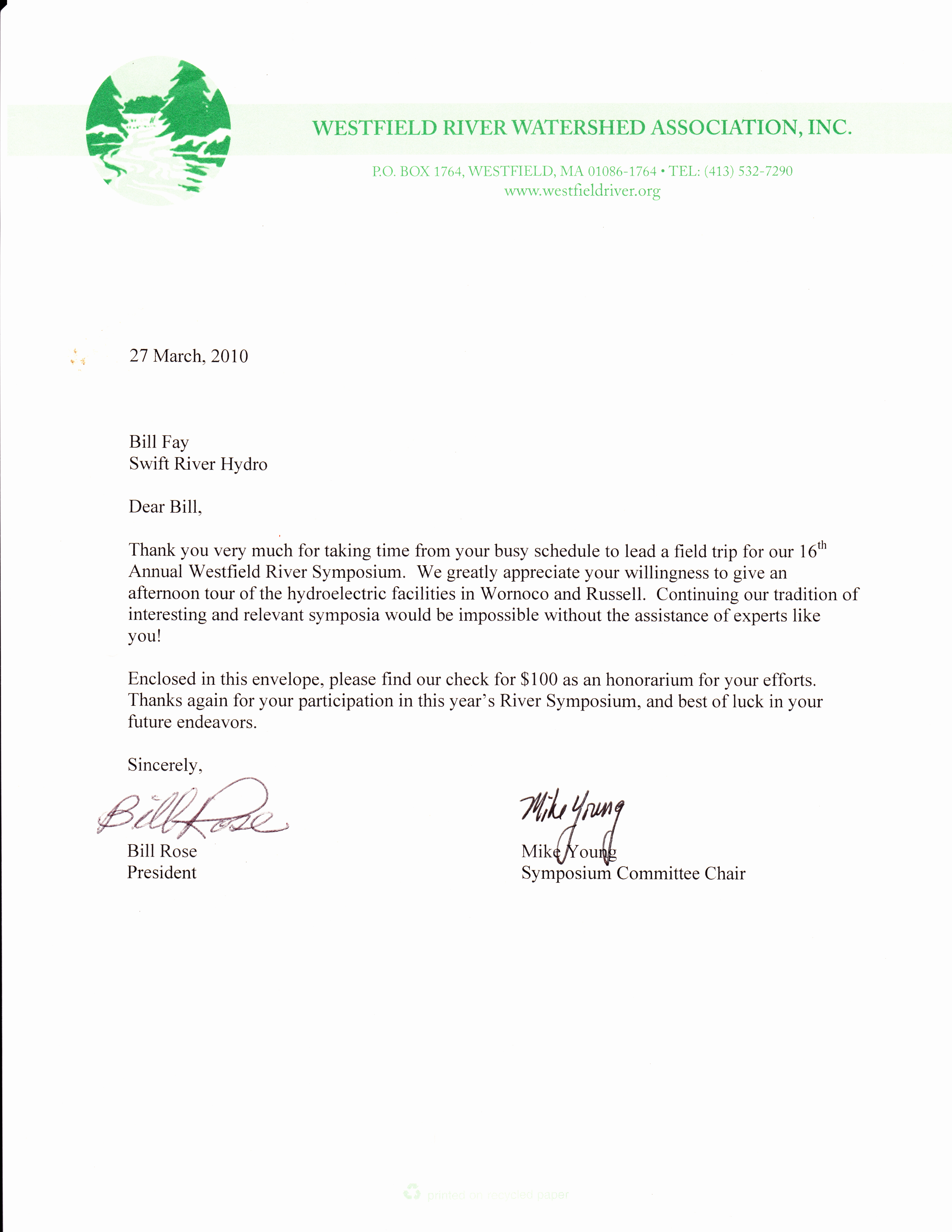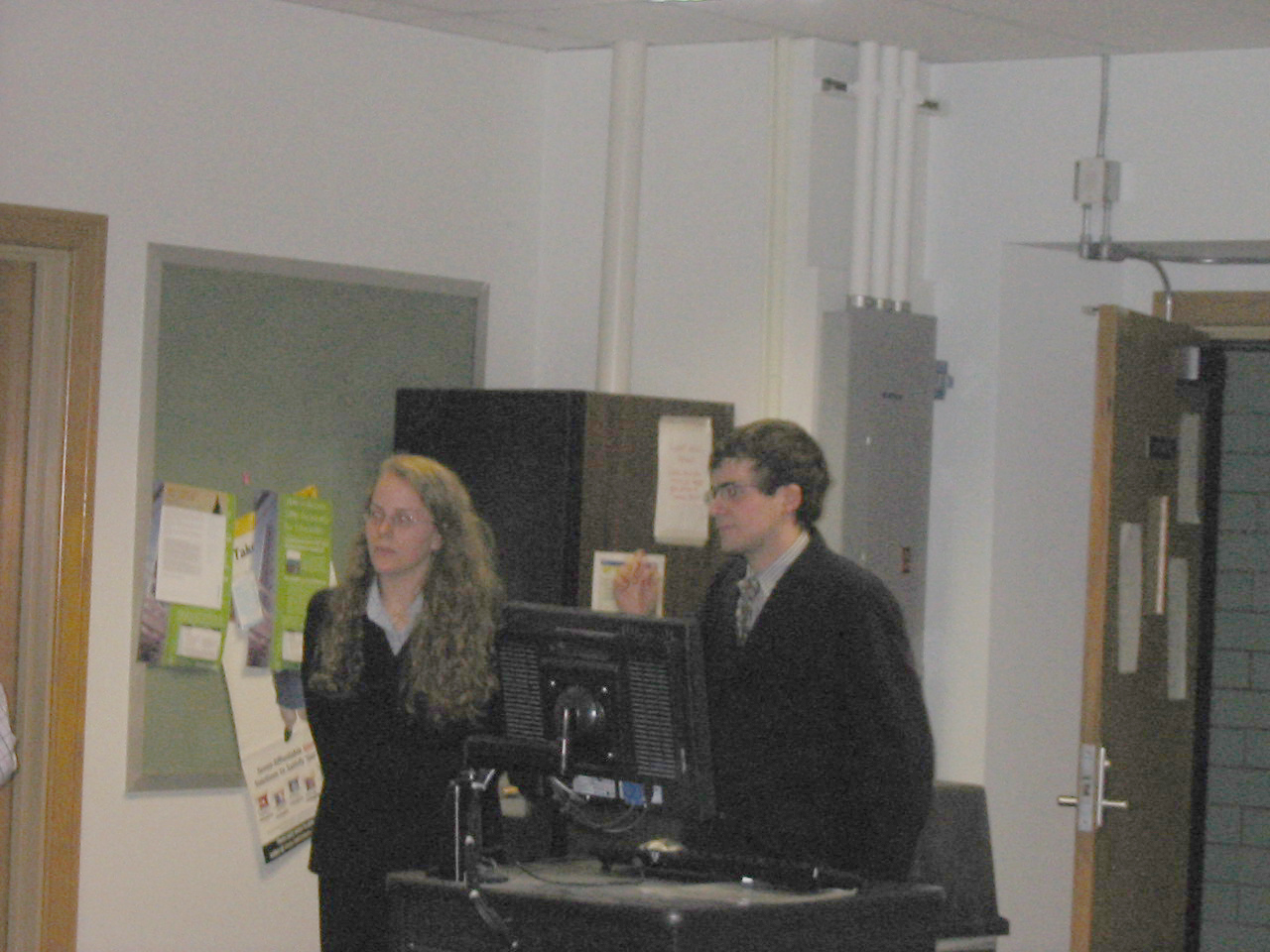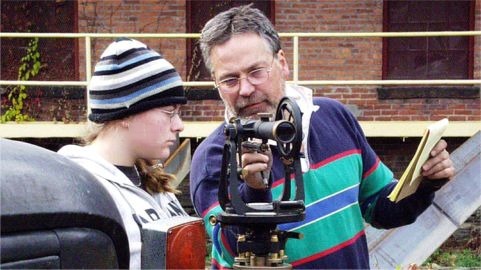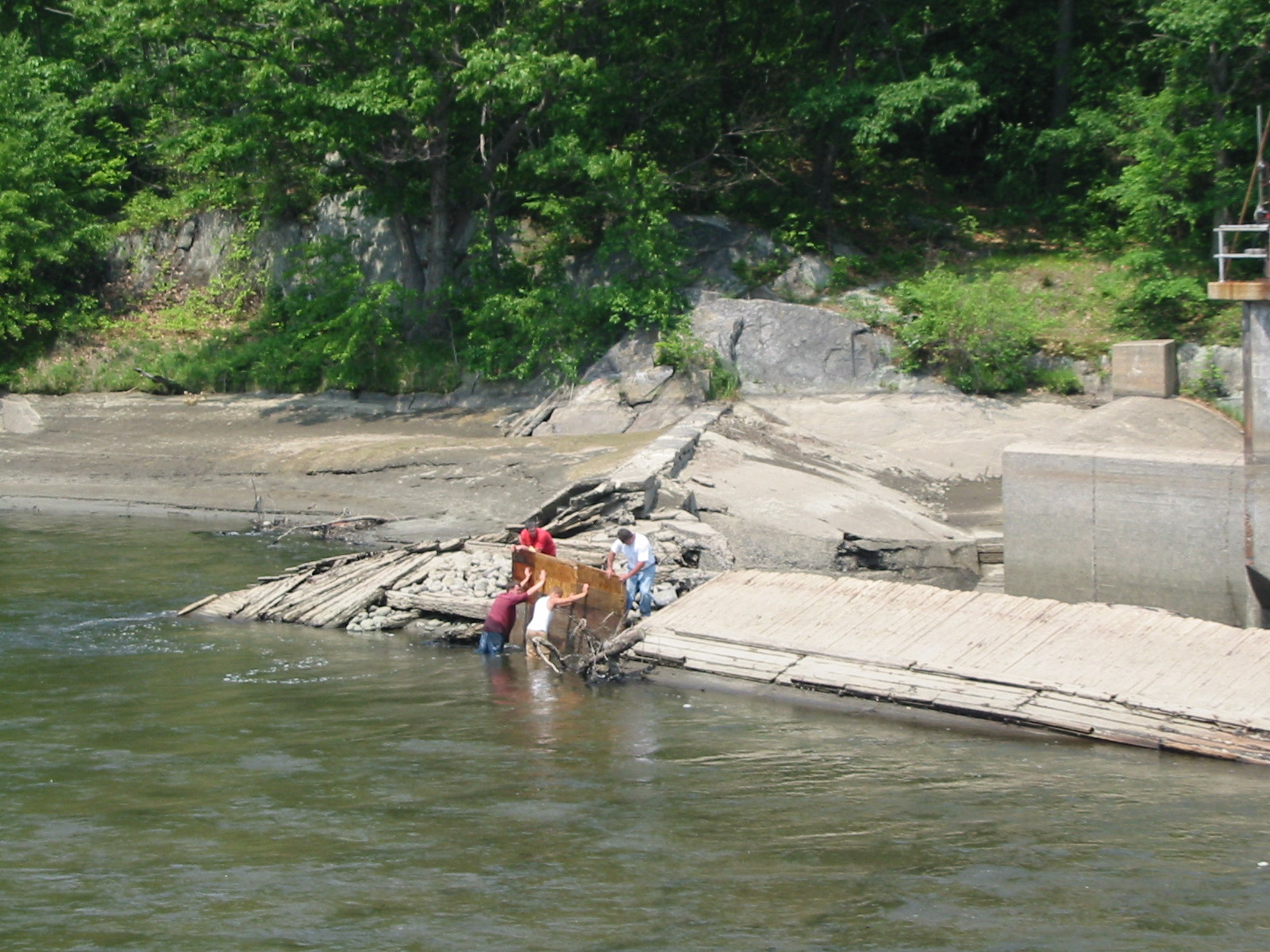

*************************************************************
*****FLASH*****
APRIL 24th, 2008

Celesty and Will presenting
their WPI, Major Qualifying Project (MQP) before the Faculty of the WPI Civil
Engineering Department. They designed a replacement dam for Anasagunticook Lake
in Canton, ME. Celesty graduates from WPI next month!!!Please see the
Anasagunticook Lake sidebar or click here:
Anasagunticook Lake Dam Replacement-C.Fay & W.Fay
<<<<<< click here
******************************************************************
APRIL 10th, 2008
Dear Viewers:
Ken Smith became bored and
left Swift River Hydro to form his own business. He has called it Smith
Alternative Energy Services with a website at
www.smithtest.com (also please see
Water Wheel Design- Ken Smith
and
Rack Design-PHI-Ken Smith). Please take a moment to see the crazy design and construction jobs Ken
is
undertaken. Recently, he has contracted, to a design/ build, of an MTC 50 kilowatt site,
to remove a 750 kilowatt generator, to connect an 1850's Tyler, Waterwheel
through line shafting to French Burr stones (grist mill), to design a PLC based
control system to control the pond level at a 200 KW, three turbine site and some engineering forensic insurance work. If you need some
international design work on hydropower projects of all sizes, please contact
him at 508-867-6976 or
ksmith@smithtest.com .
*************************************************************
NEWS PAGE

Removal of
dams seen as fish lure
Supporters expect salmon, stripers
By Tim Wacker, Globe Correspondent |
October 25, 2007
Recent discussions concerning
removal of dams on the Shawsheen River are
sparking talk of big fish coming back to this tiny waterway, including prospects
of fishing for striped bass and salmon in the heart of
Andover.
The Stevens Street and Balmoral dams
are 18th- and 19th-century structures, respectively, that have outlived their
usefulness, removal proponents say. Together the structures have blockaded
various species of migratory fish that would return to the Shawsheen if the dams
were removed, according to specialists.
"We know for a fact that at the
mouth of the Shawsheen River there
are salmon, American shad, river herring, sea lamprey, American eels, and
striped bass," said Caleb Slater, an anadromous fish biologist with the state
Department of Fisheries and Wildlife. "If we can get those herring going back up
the Shawsheen, the stripers will follow."
Similar size rivers elsewhere in the
state with healthy herring runs have attracted striped bass and other game fish,
Slater said, and the same could happen on the Shawsheen if the dams are removed.
While final decisions on removing the dams are a long way off, one crucial first
step appears headed in that direction: The owners of the Stevens Street dam, the
larger of the two, appear inclined to have it pulled.
Atria Marland Place, a national
senior services provider, purchased the dam when it bought the former Newton
senior housing complex on the Shawsheen, said the company's project manager, Jim
Lane. When a survey of the dam Atria ordered indicated removal was the most
economical option, Atria decided to take a closer look, Lane said.
"We're proceeding cautiously here,
but there are compelling arguments to do it," he said. "If the striped bass were
reintroduced to the river, it could be very exciting. But, we've only had one
meeting and we're right now only exploring the concept."
Atria has plenty of help in that
exploration. On Oct. 9 Lane met with Slater and representatives from the US Fish
and Wildlife Service, the Shawsheen River Watershed Association, and American
Rivers, a national nonprofit river restoration group.
Each is weighing the pros and cons
behind the proposed dam removals. While some older dams still serve vital
purposes - such as flood control and power generation - Slater said the Andover
dams are doing little more than costing their owners money. And rather than
controlling flooding, he said, the Stevens Street dam is actually flooding some
basements abutting the small impoundment upstream behind it.
"It's getting old and falling
apart," he said. "Rather than spend a lot of money to fix it up to just hold a
lot of water that's doing nothing, it's better for the environment to remove
it."
That is pretty much how the
Shawsheen River Watershed Association sees the project. The organization has
dedicated 20 years to opening up the river to recreational uses, especially
canoeing, which can be difficult around dams, according to the group's executive
director, Robert Rauseo.
"My general thought is: Get the dams
out and let the fish come in," he said. "Then the canoes can travel all the way
from the Ballardvale Dam to the Merrimack River."
Several
questions have to be answered before any decisions are made, Slater, Lane,
Rauseo, and others said. Ownership of the Balmoral Dam is still uncertain and
must be resolved before investigation of that site can move forward, according
to Bill Fay of Swift River Co. in
Hamilton, which conducted the Atria survey.
Removal of the Stevens Street Dam is
more complex and engineers must be brought in to make sure the buildings
abutting the impoundment are not undermined if that structure is removed, Slater
said. The Army Corps of Engineers may also have to sign off on dredging permits
needed if toxic sediments are built up behind the dam.
After those questions are answered,
the proposals will need public input. The watershed association is attempting to
schedule a public discussion at its next monthly meeting at the Tewksbury
Library, Rauseo said.
It appears that the opinions of
specialists may be more unified than local sentiment in the push to remove the
dams.
Both dams play an integral part in
Andover lore and pulling them out would remove a large chapter of local history,
according to Elaine Clements, executive director of the Andover Historical
Society. Historic preservation has a long history in
Andover and lots of local laws governing it, all of which would have
to be discussed before the society could offer an opinion, Clements said.
"It may be that one dam is less
significant historically than another," she said. "There are a lot of different
issues and voices that have to be heard regarding how it will affect the quality
of life for the whole town."
There is even some dissent in the
ranks of the watershed association. One member, Kevin Talbot of Kingston, N.H.,
has made a hobby of photographing the wetlands behind the Stevens Street Dam for
several years; he fears the landscape and the environment will change for the
worse if the dam is pulled.
"The dam provides an area for the
wildlife; they need the water and the flood plain," said Talbot. "There are all
sorts of aquatic birds there and lately deer have been coming down. If the dam
wasn't there to hold back this impoundment, the wildlife just goes somewhere
else."
The wetland would probably shrink
and the water would move through a little faster if the dam were removed, Slater
said. State studies have also shown that such changes eventually mean some fish
leave and others move in.
The cost of the work could range
from $40,000 to $400,000, according to Brian Graber, who heads the American
Rivers northeast office's dam-removal section. But those costs could be
considerably defrayed by government grants if both dams were slated to be
removed, Graber said.
That would open the Shawsheen River
and a lot of spawning grounds for migratory fish, from the Ballardvale Dam to
the Atlantic Ocean. There may also be funding opportunities for installing a
fish ladder to help fish past the Ballardvale Dam farther upstream if the two
downstream dams get cleared for removal, Graber said.
"If you can open the entire river
system all the way to the coast, then you are benefiting numerous species,"
Graber said. "If that's possible, then it makes it much more appealing to grant
money providers."
For Fay, who said he is more often
in the business of restoring dams for hydropower purposes than tearing them down
for environmental restoration, opening up the Shawsheen would be a welcome
change of pace.
"I'm just really happy to assist in
trying to get this thing off the ground," he said. "Can you imagine that, for
the first time in 250 years, striped bass could be running up the middle of
Andover?"
© Copyright 2007
Globe Newspaper Company.



LetterstotheEditor

Completing the record on sustainable energy
I commend you on the timely choice of focus in the Summer 2005 issue on
sustainable energy and want to mention another energy source, water power,
in which WPI has made contributions for more than a century, and continues
to do so today.
George Ira Alden, one of the first five instructors at the Worcester
County Free Institute of Industrial Science (now WPI), designed and
manufactured the Alden Dynamometer, which was used extensively to measure
the power output of hydraulic turbines at the turn of the last century. He
was largely responsible for the establishment of WPI’s Alden Hydraulic
Laboratory (1893) in Holden, Mass., and directed its operations, assisted by
Charles M. Allen, Class of 1894. “C. M.” invented the salt velocity method
of measuring penstock water flow rate, which, coupled with the power
measurements of Alden’s dynamometer, enabled determination of turbine
efficiency. Such measurements were critical to the satisfaction of
contractual guarantees provided by manufacturers and to the improvement of
performance through research and development. Leslie J. Hooper ’24, who
succeeded Allen as director of the laboratory, conducted field trials using
the salt velocity method at hydroelectric sites throughout the world. Both
“Hoop” and Lawrence C. (Larry) Neale ’40, the next director, utilized model
studies to help design and optimize a large number of hydroelectric
installations and hydroelectric equipment. Recent work at the laboratory has
resulted in the patented invention of a turbine that minimizes injury to
aquatic life.
Traveling in New England, it is easy to see that the water power
potential available at most old mill sites is unused. While it was once
difficult to gain the rights to access sites for water power development and
to sell electric power to utilities, it is now possible to do so. William K.
Fay ’82 (M.S.) saw that the myriad abandoned mill sites provided opportunity
for low-head hydroelectric generation. As a graduate student working at
WPI’s Alden Research Laboratory, he conducted research to improve the
performance of low-head turbines. He formed the French River Land Company to
acquire rights, refurbish and improve generating equipment, and produce
hydroelectric power. French River (www.frenchriverland.com)
is a family-owned company—Bill’s daughter Celeste N. Fay ’07 serves as
president, and his son William D. B. Fay ’09 is vice president. Altogether,
Bill has consulted on more than 70 hydroelectric projects. French River
itself has rehabilitated 16 hydroelectric sites, including Slater Mill in
Pawtucket, R.I., and Sturbridge Village in Sturbridge, Mass. They presently
operate five sites producing more than 1 megawatt of electric power and are
in the process of planning for two more sites with an additional 1 megawatt
of capacity.
Capturing the renewable energy supply in streams and rivers will surely
become much more important as other energy sources become more costly. WPI
can rightly claim both vision and action in developing hydropower today, as
it did yesterday.
William W. Durgin
WPI Associate Provost and Vice President for Research
|
|

Bill Fay passes on the old hydro
technology to his daughter Celeste. |
|
|
|
|
Old technology isn't just water
over the dam
Springfield Republican, Wednesday,
December 29, 2004
By BOB DATZ
rdatz@repub.com
It's been "Back to
the Future" for William K. Fay and Swift River Co. for more than 25
years.
Were his hair
ghost-white, the 50-year-old Palmer resident could leap into the role of
Doc Brown in that 1980s film trilogy about time travel - as long as the
subject is generating electricity using water power.
With a Wilbraham
machine shop that matches Doc Brown's lab for its productive clutter,
Swift River can both engineer and produce parts for the rehabilitation
of aging hydropower dams that dot the region's mill landscape. "This
stuff has been underwater for 75 or 80 years," the quick-speaking
company president enthused with the attendant arm thrusts of Christopher
Lloyd's movie inventor, "and the problem is, how do you take something
out that's just a big lump of rust?"
Why bother? The
answer to Fay is as obvious as an electric bill, as intrusive as
instability in the Middle East: "We're offering a clean alternative to
fossil fuels, and it's there forever."
The "we" includes
Fay and his partners bringing their offspring into their niche within
the power grid, a company founded in 1981 by economist and alternative
energy pioneer Peter B. Clark of Hamilton. Onetime employees and now
partners Fay and Ken Smith of North Brookfield have grown children
working in this 12-person staff, which operates dams from here to Sebec,
Maine.
The company also
repairs and maintains dams owned by other New England mill owners and
power companies. Besides Clark, the remaining partner is W. Davis Hobbs
of the Turners Falls section of Montague .
They are as likely
as not to arrive in sweatshirt and jeans to the former Collins Paper
mill complex off Cottage Street, where they own a small hydroelectric
dam and have carved out an office that looks as lived-in as the machine
shop.
From top to bottom,
tasks run a gamut. Fay, a spectacled mechanical engineer, had dark,
workmanlike crevasses running through his palms, screaming of machine
work - first thing on a recent Monday morning. At other times, he's
designing some workarounds or dickering with wildlife officials about
how to protect fish species living or spawning near dams - a major
obstacle to hydropower development.
.jpg)
Ken Smith giving his son Ian and
Fay's daughter Celeste and son Will a rigging lesson
On the other end of
the organization, 18-year-old Ian Smith (son of Kenneth, partner and
general manager) is absorbing carpentry, electrical work and machinist
training from shop manager Warren Fay of Springfield, William Fay's
brother. The younger Smith, six months out of North Brookfield High
School, has plans to learn technology more formally. But he is happy to
describe how he helped hoist a 50-foot power
shaft from the mill's cellar to recondition a used, 60-foot
lathe. (Click to see . "It's a little bit of
everything," he said of his work. "It's always something new every day."
Something old as
well. Fay said many of the half-dozen company-owned dams date from 1918
and, like the Red Sox, were due to move to more productive levels. The
company is working with a Massachusetts Technology Collaborative "green
power" grant to upgrade its power production from the company's
Pepperell dam to 1.9 megawatts. At 3.5 megawatts, Woronoco dam in
Russell is the largest Swift River property, although that is a fraction
of a major power plant's capacity. Nationally, hydro accounts for about
10 percent of energy production, according to the Federal Energy
Regulatory Commission, whereas in the 1930s it produced one-third.
But Fay said there
are thousands of dams in New England in various states of disrepair. He
has been driven like a turbine by this specialty since going to work for
Ware River Power Co. in Barre out of college. He pointed to several
advantages should a 40-megawatt potential of the Connecticut River dam
at Windsor Locks be developed.
"It would stabilize
the river (level) and bring back the waterfront in Springfield," Fay
said. "God knows Springfield needs some rejuvenation." And with the
Yankee Rowe nuclear plant weighing in at 60 megawatts, he added, "you're
talking about a nuclear power plant with free flow and no pollution."
The state's
Wetlands Protection Act has made new dam construction a virtual
impossibility in recent years, so as Swift River looks to the future of
hydropower, Fay describes his longtime colleagues and working family
members in the same way as the old dams his company works to develop:
"We all have links to the past."
Copyright 2004
MassLive.com. All Rights Reserved. |

Union-News (Springfield, MA)
| Republican, The (Springfield, MA)
June 7, 2005
River drained to permit dam
repairs
Author: GEORGE GRAHAM; STAFF
Edition: Metro West
Section: News
Page: B01
ggraham@repub.com |
RUSSELL - A two-mile stretch of the Westfield River was
drained down to a narrow channel yesterday so the operators of
the former Strathmore Paper Co. dam could perform emergency
repairs to one of its gates.
Swift River Hydro Operations Co. received permission from state
and federal authorities last week to perform the drawdown after
the dam's low-level outlet gate malfunctioned. 

Temporary cofferdam to divert H2O Fay
drilling new pin hole in gate stem
"As it was, the gate was stuck open and the river was going to
drain regardless," Swift River General Manager Kenneth M. Smith
said yesterday.
Swift River accelerated that draining process Sunday morning.
As of late yesterday afternoon, however, the river had not
dropped enough for workers to be able to inspect the gate, even
though vast swaths of exposed riverbed could be seen upstream.
The game plan is to repair the gate as quickly as possible and
gradually refill the pool created by the dam, Smith said.
"I am hoping that it's something simple like a shear pin that
let go," Smith said.
Smith said heavy rains could cause the river to rise and further
delay the repair.
Yesterday afternoon Swift River workers used sandbags to
obstruct a gap in the original dam in order to further reduce
the water flow to the current dam's low-level outlet.
The original dam, built in the 1860s, was compromised in the
1955 flood, and its replacement was built shortly thereafter.
Swift River employees walked the upstream riverbanks
searching for fish and mussels marooned by the draining river.
As of yesterday afternoon the riverbank patrols yielded about
seven stranded mussels, which were then moved to the
water-filled channel, and no stranded fish.
Smith said the riverbed's gentle slope allows fish to reach
the river's deeper channels on their own as the water level
drops.
William K. Fay, president of Swift River Hydro, said yesterday
the gate malfunction! ed during the final phase of a fish study,
conducted at the behest of the Federal Regulatory Commission, to
determine how well the dam's downstream fish passage is working.
The test, Fay said, entailed tagging 600 salmon smolts with
tiny tracking devices. Better than 75 percent of the smolts
safely made it through, he said.
"We had great results," Fay said.
This summer Swift River plans to install three American eel
passages at the dam, Fay said.
"We'd like people to know we are spending a lot to make it
better here," Fay said.
Swift River operates the power dam for its owner, Woronoco
Hydro LLC.
A state Department of Environmental Protection official said
last week that Swift River has all the necessary state and
federal permits to draw down the dam.
William K. Fay, president of Swift River Hydro Inc.,
yesterday checks on the drawdown of the Westfield River in
Russell. The drawdown is needed to complete repairs on a dam
gate.
Crews pile sandbags at the ! site of a Westfield River drawdown
in Russell yesterday. The sandbags are part of the attempt to
slow the flow of water at a dam gate in need of repairs.
Copyright, 2005, The Republican Company, Springfield, MA. All
Rights Reserved. |
|








.jpg)
